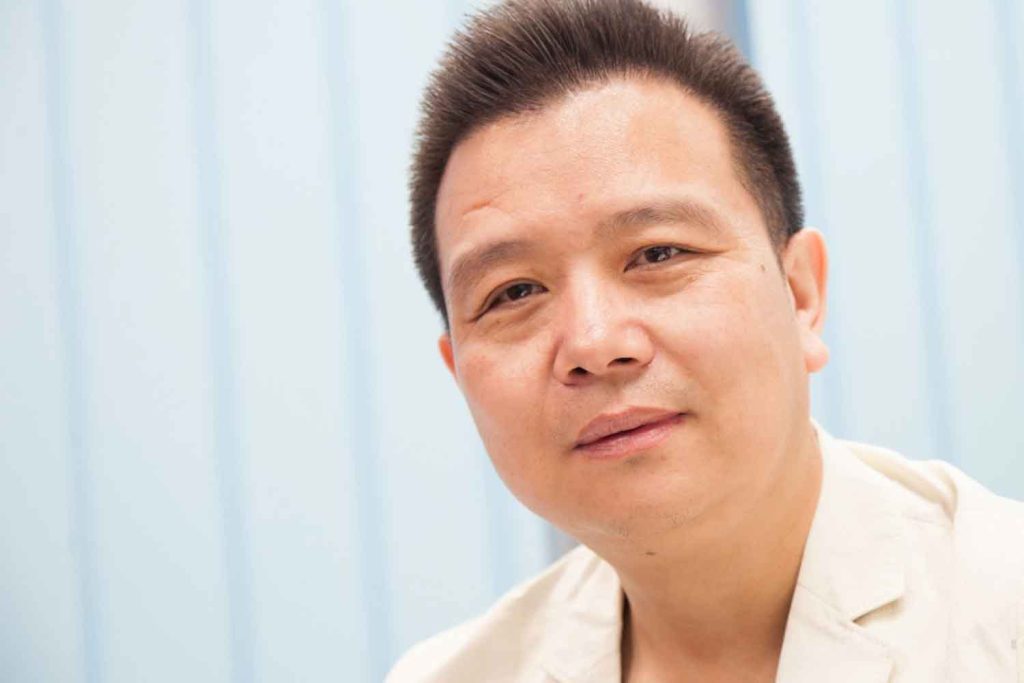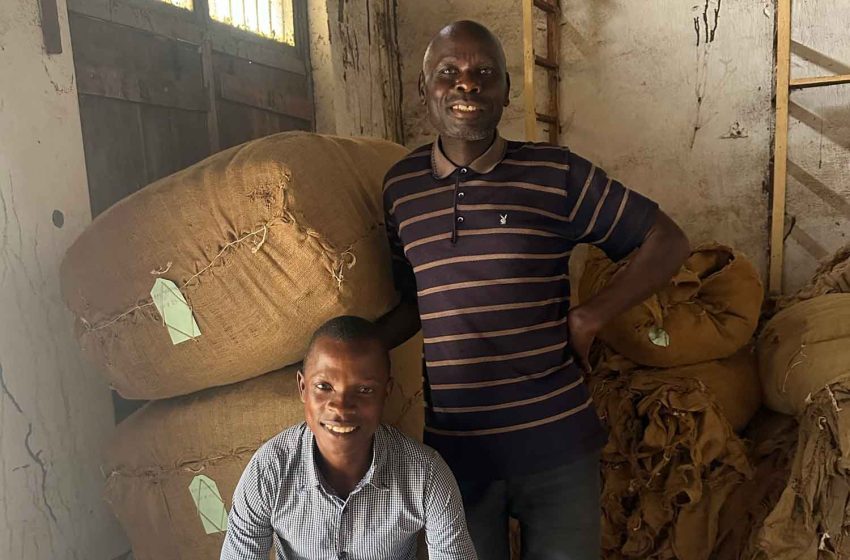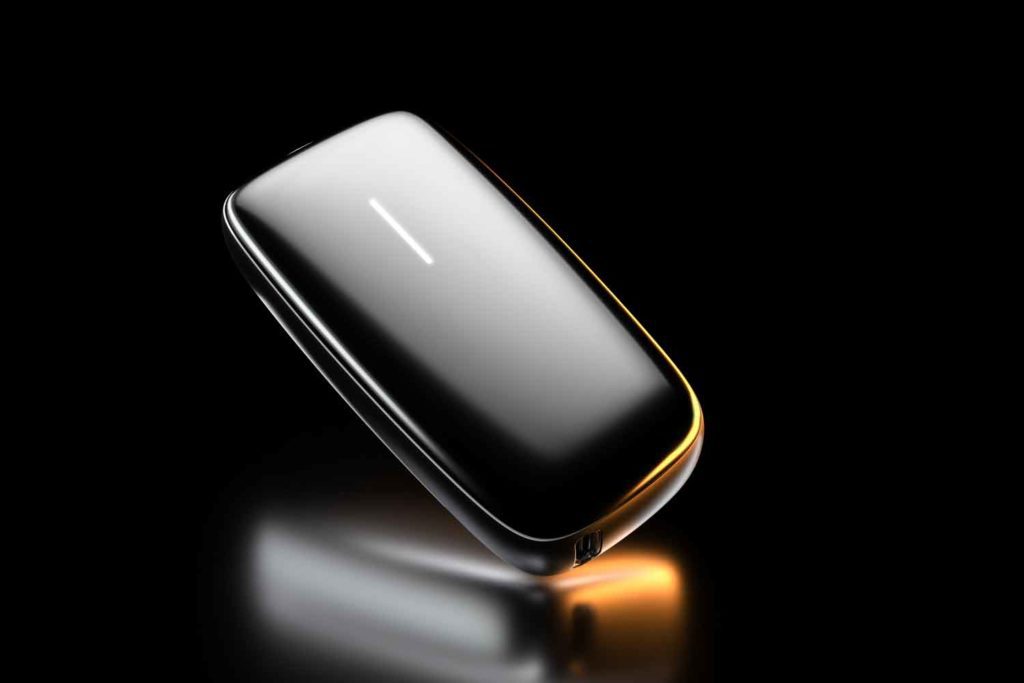
Innokin continues innovating to reduce harm, improve the user experience and minimize the environmental impact of its products.
By Stefanie Rossel
Founded in 2011, Chinese vape product manufacturer Innokin is almost a veteran in the world of electronic cigarettes. The company set out with the goal to create a smoke-free world by combining technological innovations, leading designs and the highest standards of quality. Today, Innokin’s products are sold in 80 markets worldwide.
With a focus on continuous research and development and a 12,000 square meter factory in Shenzhen, Innokin has created a comprehensive portfolio of vaping products. Among its bestselling devices are the Endura and Platform series, which were introduced in 2015 and 2017, respectively. The company is also known for the MVP Pod, a streamlined device targeted at new vapers, which debuted in late 2021. In the same year, the manufacturer teamed up with Fourier Technology to present Sensis, the first vaporizer using fourth-generation technology: In contrast to previous generation devices that are based on single direction-current technology, the innovation uses alternating current, which sends electricity through the coil in both directions. According to Fourier Technology, alternating current increases the efficiency of heat transfer between the coil and liquid, which improves flavors and extends coil life.
In an industry that has become accustomed to seeing major hardware innovations every 12 months to 18 months, however, it was an e-liquid development that got Innokin in the headlines. In May last year, the company launched the Aquios Bar, formerly known as Lota Pod, a new sub-brand of vaporizers, for which it has partnered with Aquios Labs in the U.K. Aquios Bar was the first vaping solution to feature a water-based e-liquid.
The pod uses a groundbreaking technology developed by Aquios. Named AQ30, the technology enables the production of liquids containing 30 percent water through a specialized formulation process. Compared to traditional vapes, water-based liquid creates a smoother, cleaner vaping experience, delivers nicotine to the bloodstream more efficiently and significantly reduces the dehydration associated with vaping.
It allows the hardware to operate at considerably lower temperatures. Conventional e-liquids contain polypropylene glycol (PG) and vegetable glycerin (VG) as well as flavor and nicotine. PG and VG need to be heated to 189 degrees Celsius and 292 degrees Celsius, respectively, to produce a vapor that can be inhaled—a process that causes dehydration. Adding water to the liquid reduces the boiling point and vape temperatures, thus diminishing harmful substances in vapor.
“With a significantly lower operating temperature of 119 degrees Celsius, devices using our AQ30 water-based technology have been found to produce 92 percent less acetaldehyde and 81 percent less formaldehyde compared to traditional vapes,” explains Innokin co-founder George Xia. “We hope that by continuing to invest in water-based vaping, we can create a truly pure vaping experience.”

The Power of Water
Previously, water’s low viscosity level made it unsuitable for use in vaping devices at any meaningful level. Aquios has been able to overcome this hurdle with a special adapted vaping device. Equipped with new heating, wicking and airflow systems, the Aquios Bar initially launched with a portfolio of three water-based devices, each with their own position for specific global markets and consumer needs, according to the company.
Experts consider water-based vaping one of the most significant breakthroughs since the introduction of nicotine salts. Xia is convinced that as the vaping industry matures, policymakers and consumers will naturally demand more research into alternatives to combustible tobacco. “A key part of reducing harm is lowering the emission of HPHCs [harmful and potentially harmful constituents],” he says. “Research shows that lowering the operating temperature of vaping devices reduces HPHC emissions. Water-based vaping is one of the most effective ways of lowering vaping temperature, so we believe this technology has a key role to play in the future of vaping.”
During the September 2022 GTNF in Washington, D.C., Innokin’s and Aquios Labs’ water-based solution was recognized with a Golden Leaf Award. In November, Innokin added the Innobar C1 to its product range, including a lineup of disposable devices and the reusable Innobar C1 pod system, all of which work with A30 water-based technology. Meanwhile, Innokin has launched its water-based vape products in a number of markets. “Our rollout started with key European markets including the U.K., Germany, Sweden, Italy and Poland,” says Xia.
“With growing awareness for the technology, we are now aiming to scale up to reach markets that have already declared e-cigarettes legal and compliant worldwide. We believe that by doing so, we can offer even more individuals a safer and more enjoyable vaping experience. We are also in discussions with other vaping brands to integrate our technology into their product portfolios. The new Aquios Juice series, consisting of water-based e-liquids in individual bottles, is expected to be launched in several European countries, including the U.K. We’ve developed refillable devices that synergize with the bottled Aquios e-liquid, and we’ll launch them with the e-liquids.”
Meanwhile, Innokin is working to further improve its water-based vaping by fine-tuning and expanding flavor profiles to meet the local demands in different markets. But there’s more in Innokin’s pipeline: “We are also exploring our offering of tobacco flavors as some regions move to restrict flavored vaping products. Water-based vaping is the ideal platform for tobacco flavors since the reduced PG and VG content allows us to represent the natural, complex aromas of tobacco more accurately. We are also exploring the possibility of introducing our water-based e-liquids to individual bottles and refillable devices to cover a wider range of vapers. Additionally, we are developing a new generation of ultrasonic vaping products, which allow the ultrasonic ‘coil’ to be separated from the device. This will reduce waste substantially and allow consumers to use ultrasonic coils for far greater lengths of time.”
Making Vaping Greener
At Innokin, innovation isn’t limited to enhancing vaping technologies. The company also focuses on sustainability and is constantly tweaking its hardware and product packaging. While disposable vapes have rapidly gained popularity and helped countless smokers quit cigarettes, they also present an environmental challenge. The EU is expected to ban single-use vapes by the end of 2026. “We have been taking meaningful steps to reduce the environmental impact of our products for a number of years now, and our core product offerings remain to be within the refillable category,” Xia says. “Within our disposable portfolio, we have developed products like the Innobar F3 and Aquios Bar, which use 95 percent less plastic than other leading devices.”
Both the Innobar F3 and Aquios Bar feature a reinforced card shell design.
“We welcome sensible regulations to reduce the environmental impact of vaping, and we see refillable products, along with pre-filled pod-style products, as an excellent platform for reducing waste,” says Xia. “We are now seeing consumers who made the switch to vaping via disposables demand solutions that have a lower environmental impact and cost. As such, the industry needs to offer affordable, simple permanent devices that deliver the same satisfaction as disposable devices. Our upcoming Klypse Zip pod device is designed to cater to this need, with an affordable price point, convenient refills and award-winning performance, building on the success of our original Klypse pod.”
Introduced in early 2022, the Klypse is a mid-sized, easy-to-use pod system that makes refilling simple for new users. Featuring a refillable pod enables vape beginners to try out different e-liquids or even taper down nicotine strength if they’re seeking to quit nicotine altogether.
In addition to making its devices more environmentally friendly, Innokin has introduced recyclable packaging across all product lines, carried out battery recycling programs and reforestation initiatives and partnered with e-waste specialists in major markets.
Consumer education plays a key role in Innokin’s approach. From mid-April to early May this year, the manufacturer ran its “Vape for the Planet” campaign, teaching customers sustainable vaping practices. Xia says his company has been overwhelmed with the response to the campaign, which educated consumers about proper disposal of vaping products and how they can reduce their impact by switching to a refillable device.
“We also gathered data via a survey to measure consumer sentiment toward sustainability in vaping, and this feedback has provided us with some good ideas about how we can reduce waste while continuing to serve our customers with excellent products,” he says. “We believe the vaping industry must come together as a community in order to solve the question of waste, and working with organizations such as the U.K. Vaping Industry Association will accelerate this process.
“The main takeaways from this campaign are that consumers want more education about how they can vape sustainably and that most people are willing to take extra steps to recycle used products as long as they are provided with the necessary resources to do so. We look forward to discussing our findings with other key players in the industry and identify ways we can deliver a more sustainable future.”





























